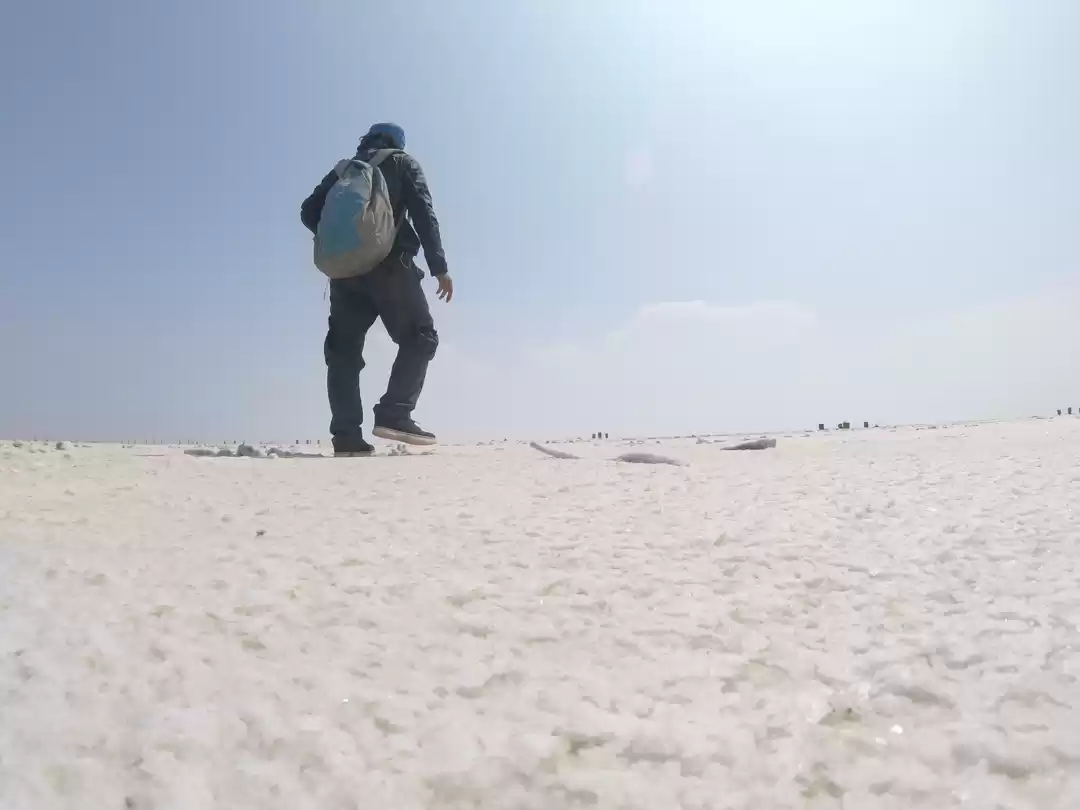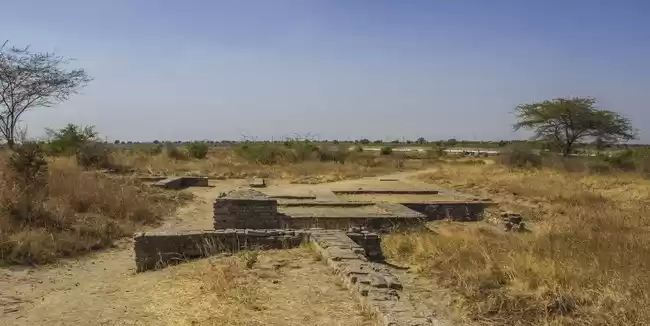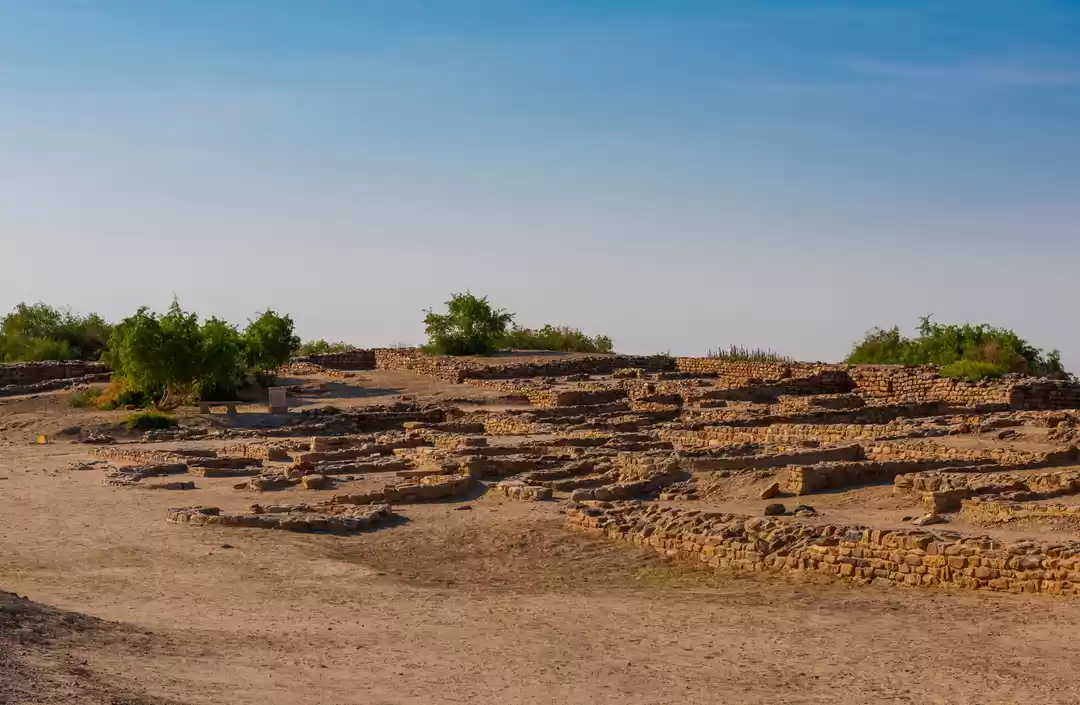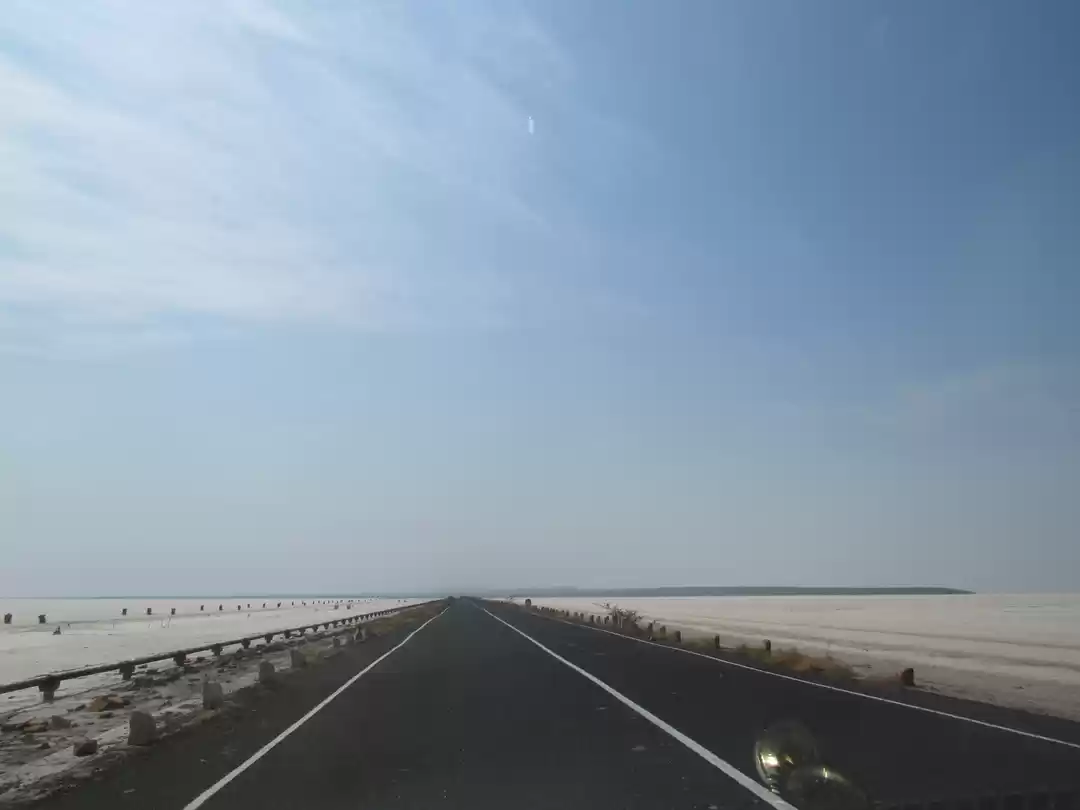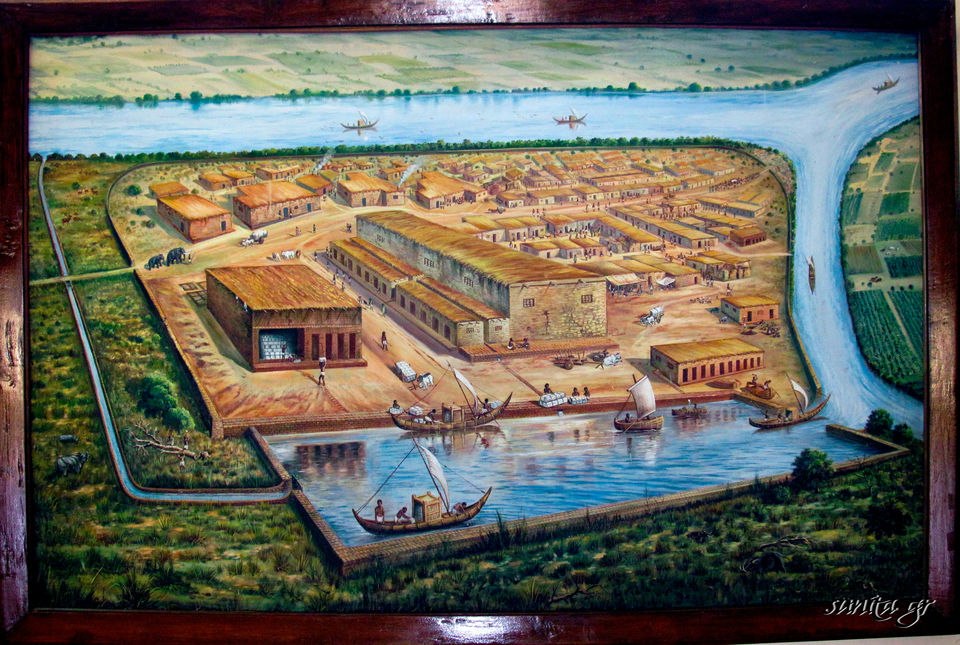
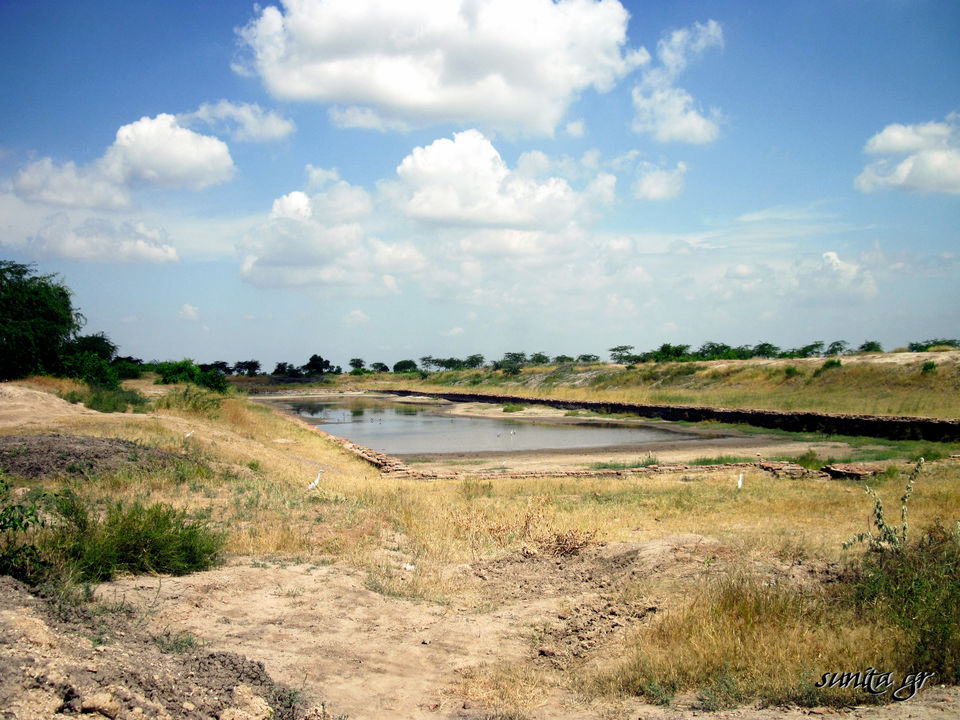











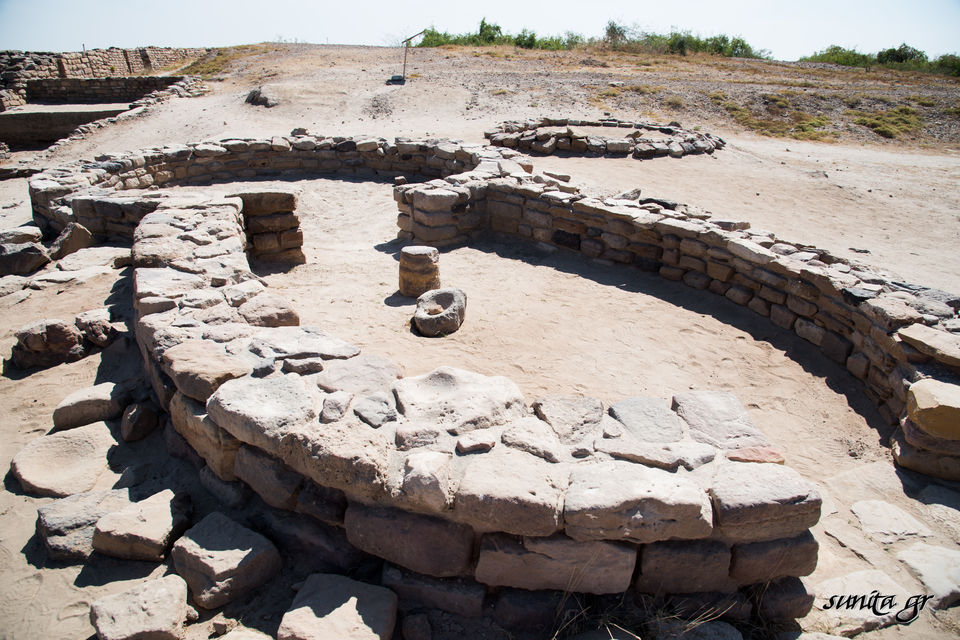
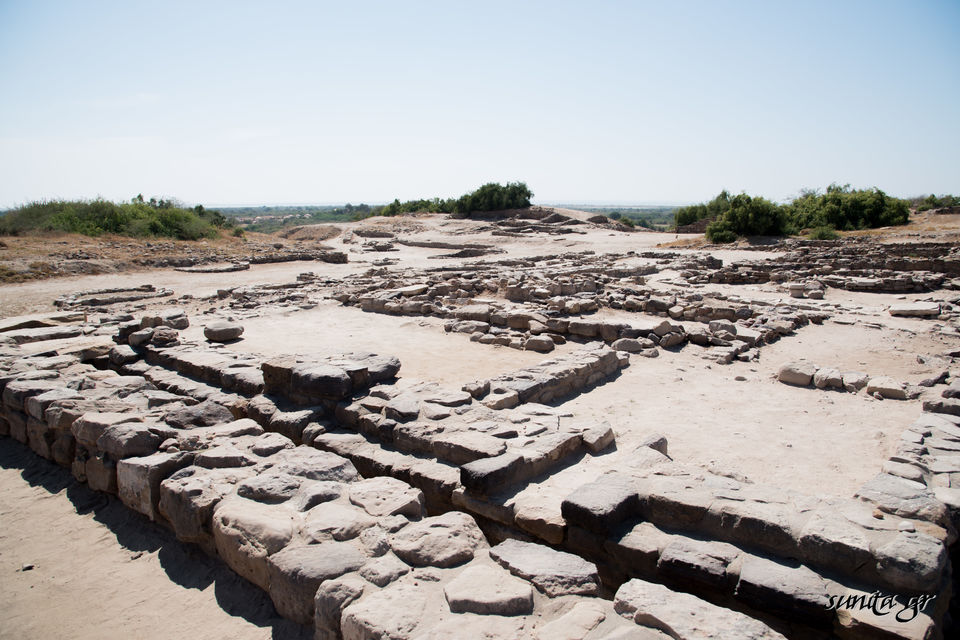


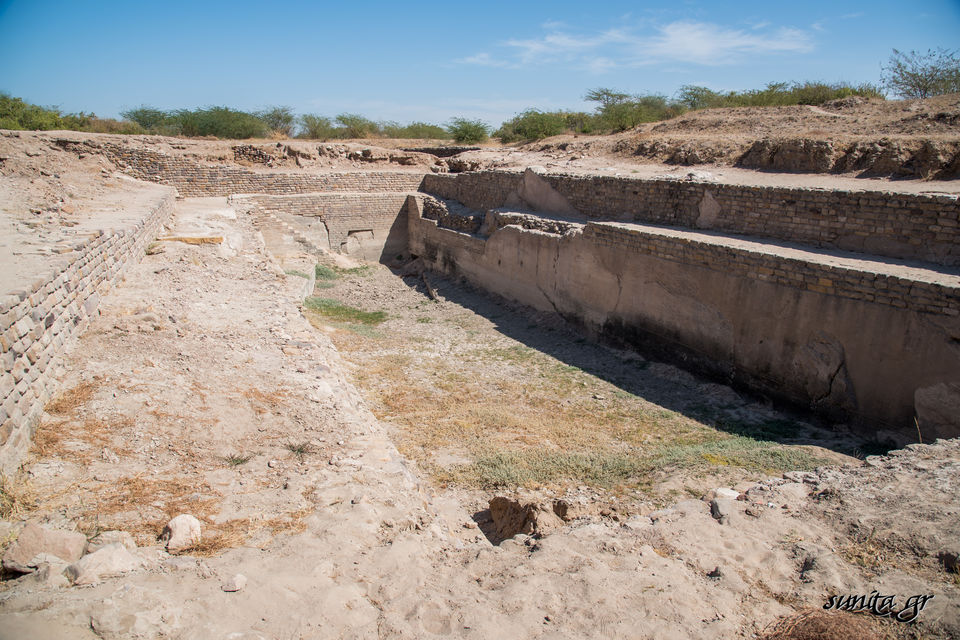

My fascination with ancient civilizations started with the picture of the Harappan bull seal in our class 8 history textbook. When most kids would loathe the idea of going to museums during summer vacations for holiday homework project, I would love to spend hours at the Museum of National History in New Delhi, wanting to know more about history & civilisations. The ancient indian civilisation is called as the Indus valley civilisation or the Harappan civilisation that spread around the Indus river in Pakistan and in Northern & Western parts of India. The Harappan discoveries form an important part of the museum collection and were excavated from important Harappan sites in India, namely Dholavira & Lothal, both located in Gujarat. Soaked with imagination, a 13 yr old made her travel wish list to see these sites one day.
I was able to see Lothal in 2009 and Dholavira didn’t happen until 7 yrs later, in 2016. Walking amidst the 6000 yr old ruins transported me to a world of imagination. What did the people look like 6000 yrs ago? What was their daily life like? What did they like? What religion did they follow? Did they believe in God? Did they have affairs? What did marriage mean? What were the rules of the society? Did women drink? Were they career minded? The inquisitiveness was just endless. I stood still till my imagination ran wild and began to become real. I felt teleported, as part of the history began to unfold itself right in front of me, giving me a sneak peak into the era bygone. For a brief few moments, I see people milling about their daily life and there I am, a shameless voyeuristic intruder observing them from the sidelines. Snapping out, I know it is my wild imagination, but I so want it to be real and I so want to be a time traveller!! Sigh!
So which one did I like more? Let’s see. Lothal is more accessible from Ahmedabad and hence gets many more tourists than Dholavira, which needs a special trip to be planned to Bhuj/ Kutch. Lothal is also the better excavated of the two. One can see remains of lot many ruins of structures of the old town at Lothal than in Dholavira. The shipping dock is awe inspiring. The access road to Dholavira is undoubtedly more scenic as it passes by the White Salt Desert. The sheer number of reservoirs here is mindboggling. One can see open-air fossil museum and migratory birds at a short distance away from the excavated city of Dholavira.
Clearly both Lothal & Dholavira have equal number of things going in for them. I loved Lothal for the architectural ruins and Dholavira for the scenic beauty around. From that perspective, I enjoyed Lothal much more as it catered to the interest in ancient civilisations I began to have as a 13yr old wishful time traveller, immersed in history textbooks.
Do read the details of the sites below:
Lothal – A 5500 yr old town
Located at a peaceful 2 hr drive from Ahmedabad, Lothal was discovered in 1954 and lies on an old purported course of river Sabarmati. Lothal, dating 3400 BCE, means the mound of the dead, which is quite an unusual name for a town! It is most famous for its huge shipping dock, the remnants of which is still seen today, along with an attached large warehouse. The dock was tidal dock and was connected to the sea by a river which is now dried up and was functional even till mid 19th century. The massive warehouse was built adjacent to the dock where the trade items were loaded, unloaded and stored. The dock was the lifeline for the city and the settlement and there is evidence of trade over the Arabian sea to Pakistan, Egypt & Middle east. The warehouse was built on a raised ground to prevent destruction during floods.
Next to the warehouse lies the acropolis or the upper main city. This is also built on a raised ground which indicates fear of floods leading to proper town planning. Many remains of houses, cross section of which reaches about a foot high in height are also seen. The houses are small and built with brick and stone masonry. Extensive drainage system can also be seen leading away from the houses. These drainage systems characterise the town planning of the Indus valley civilization. One can also see many wells built across the acropolis along which ensured supply of fresh water for the houses. Remnants of the pot furnace can also be seen, where the pots were made for use and trade.
From a short walk from the acropolis or the upper town, is the lower town which was also a commercial cum residential area. Here one can see remains of well laid streets with cross sections of shops and workshops running along the north south street and the merchant’s houses running along the east west street. The bead factories which made micro-beads as low as 0.25mm in diameter, were the hallmark of Lothal’s exports. There is also a cemetery, a short walk down the lower town where two skeletal were discovered during excavation. This part had become inaccessible due to wild plants' growth at the time of my visit.
Dholavira: A 6600 yr old town
Dholavira is one of the largest and important excavated sites in Indus valley civilization in India. It dates back to 4500 BC and the excavations indicate that there were 7 stages of settlements of the civilization that were built over the old ones through the passage of time. The current day Dholavira is on an island in the Rann of Kutch Lake and the drive to Dholavira is beatific, surrounded by the White Rann desert on both sides of the road. Our first stop was at the open air fossil museum which is located right on the edge of the Island. Here one can see huge fossilized trees, which are app 180 million years ago. To imagine that kind of passage of time, sea, wind & sun on the trees that ends up converting them to stones is just not possible! The Rann of Kutch lake, right in front of the museum, was dotted with thousands of flamingoes and cranes as far as the eye could see. The lake is actually the summer home for these birds where they find abundant food supply and can be far away from human presence. There are 3 huge hills that are located within the lake and are supposed to be the breeding grounds for the flamingoes. These hills are not accessible to humans at all, giving the birds much needed space to flourish. Walking around the fossil museum, one can get closer to the lake and observe the birds up-close.
The Dholavira excavated city itself is maintained by the ASI; the site was discovered in 1967 and has not been even till date fully excavated. It has one of the world’s earliest and best planned water conservation systems and world’s first signboards, written in ancient Indus script which hasn't been deciphered till date. The large imposing citadel has four entrances, one each in north, east, west & south side and is built with sun-dried brick and stones. There seems to be remarkable town planning as one can see neatly arranged houses, proper lanes and remains of a planned drainage system. The mania
In a quick pit stop to the museum attached to the excavated city, we were able to see all the discoveries of pottery, jewelry, beads, coins, figurines, tools etc. that give us an insight into the life of the early dwellers. A lot of the discoveries like the famed Harappa seals & coins have been moved to the Museum of National History, New Delhi.
To read more about Gujarat travels and other experience, click here : thevisastampcollector.wordpress.com
----------
How to reach Lothal :
Lothal is a 2 hr drive from Ahmedabad by taxi.
How to Reach Dholavira:
Dholavira is a 4hr drive from Bhuj and 6 hrs drive from Ahmedabad.
cal obsession of the civilization with water is reflected in the sheer number of water conservation bodies. Every part of the remaining imposing citadel has large reservoirs, huge deep wells, step wells and a well connected network of underground channels to link the water bodies and supply them to the houses.
Frequent Searches Leading To This Page:-
Best Tour Packages for Gujarat, Top Gujarat tour packages with price, Best Travel Packages for Gujarat, Best Gujarat Trip Packages, Gujarat Holiday Tour Packages, Top Gujarat Packages for Family, Places to Visit in Gujarat other than Beaches





































